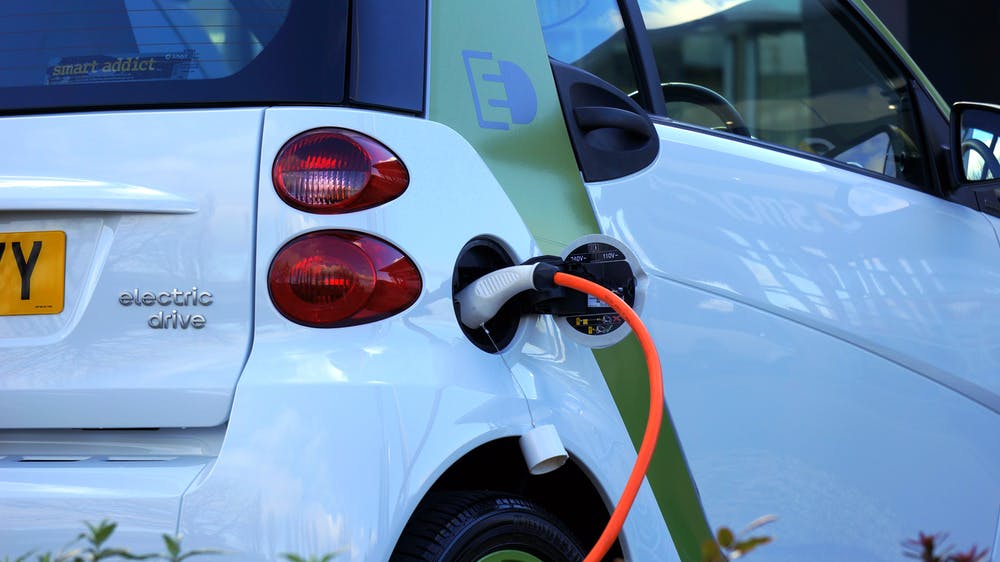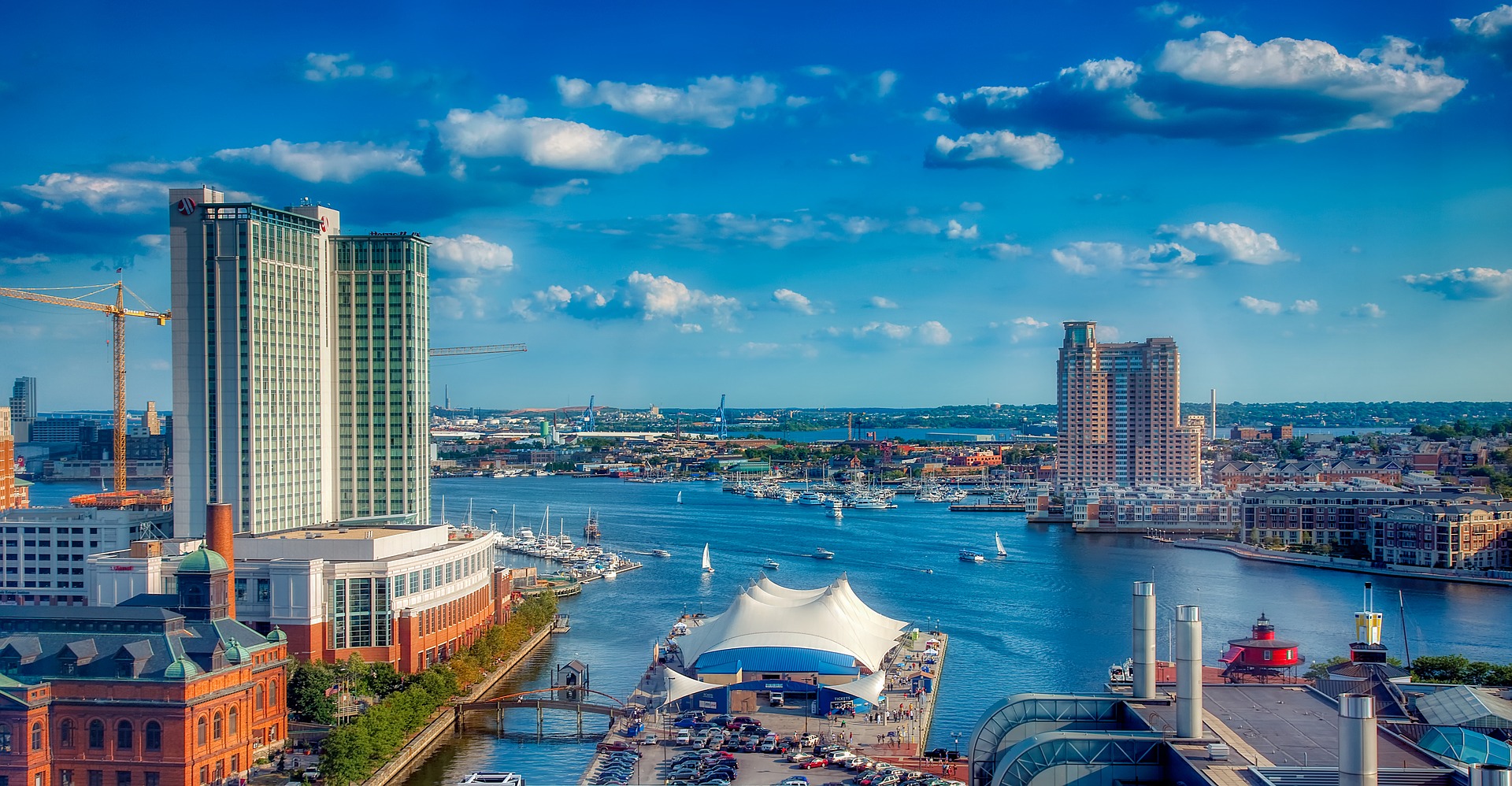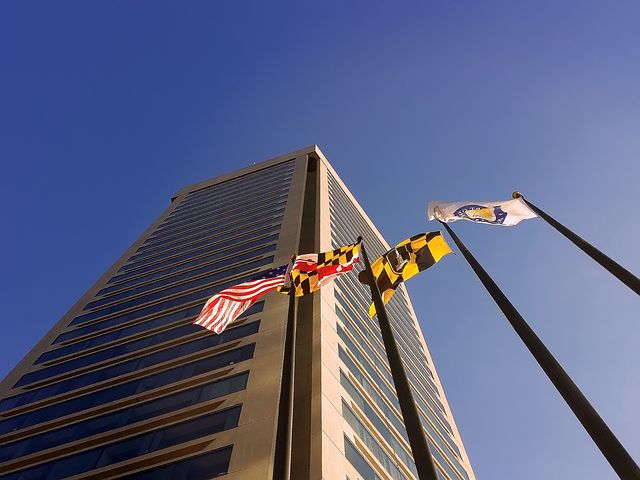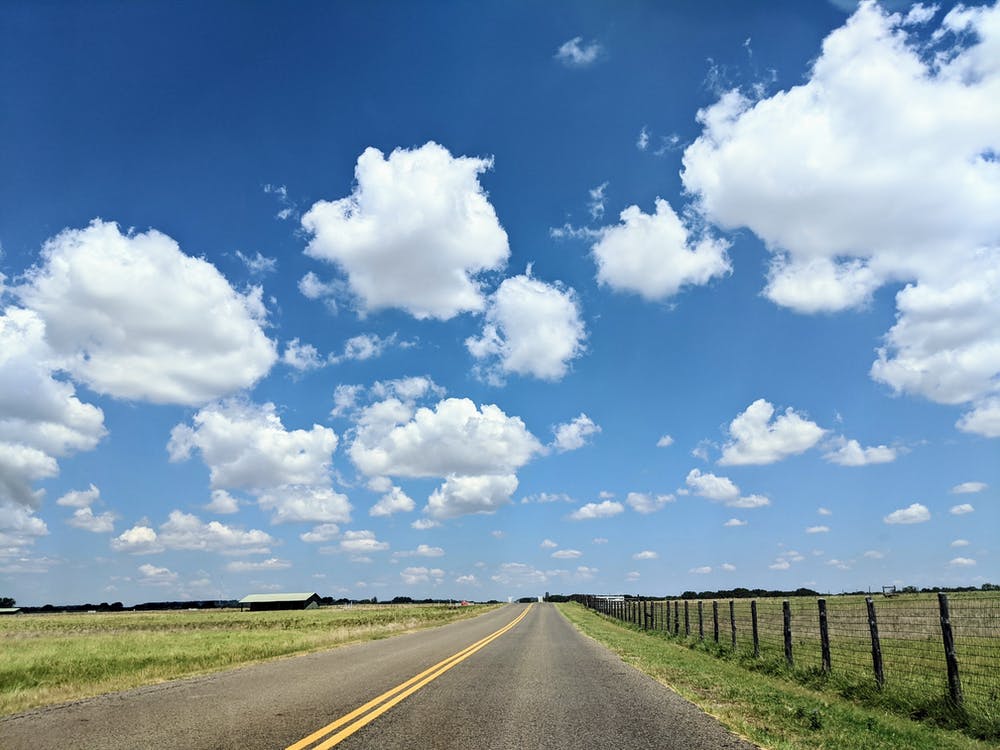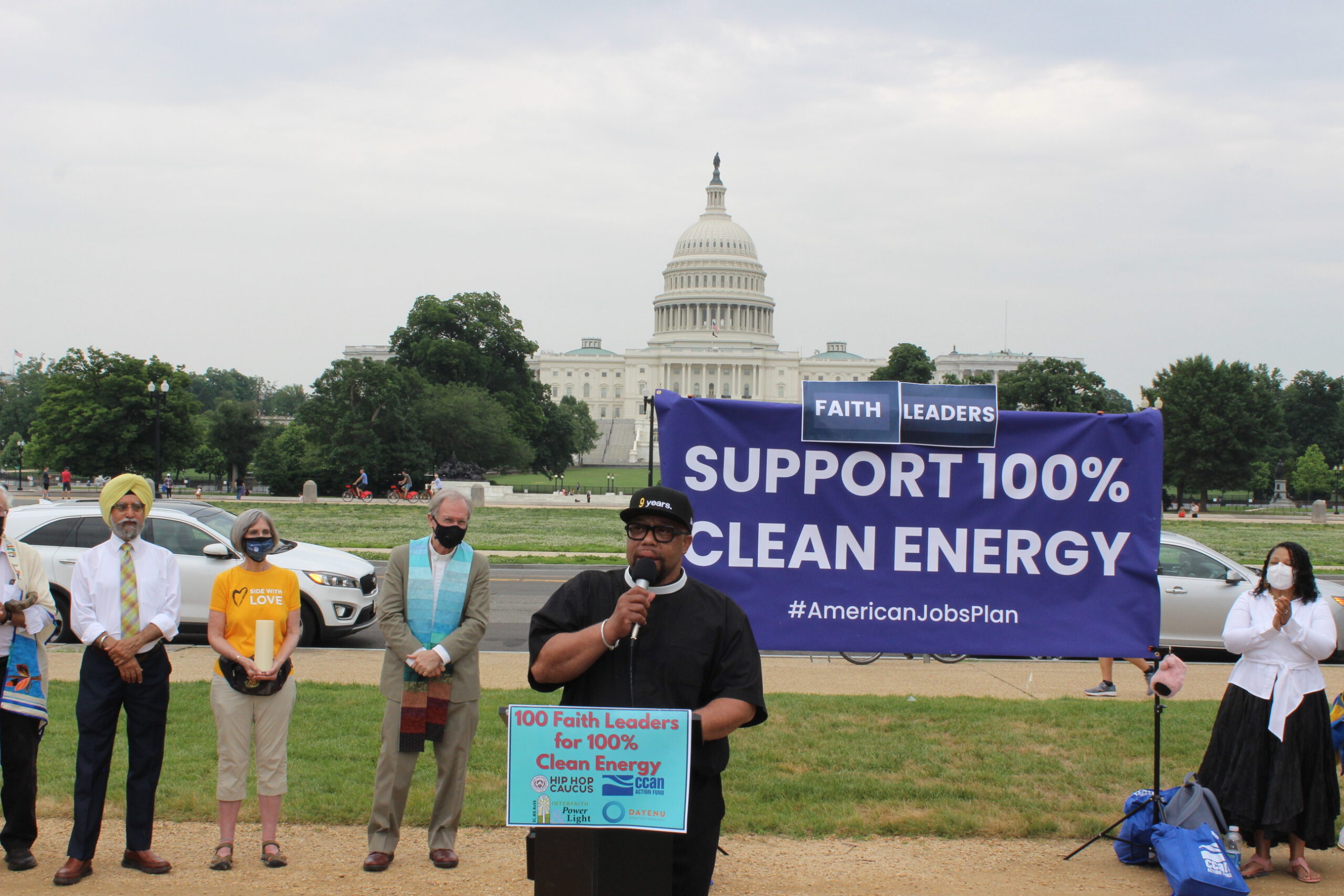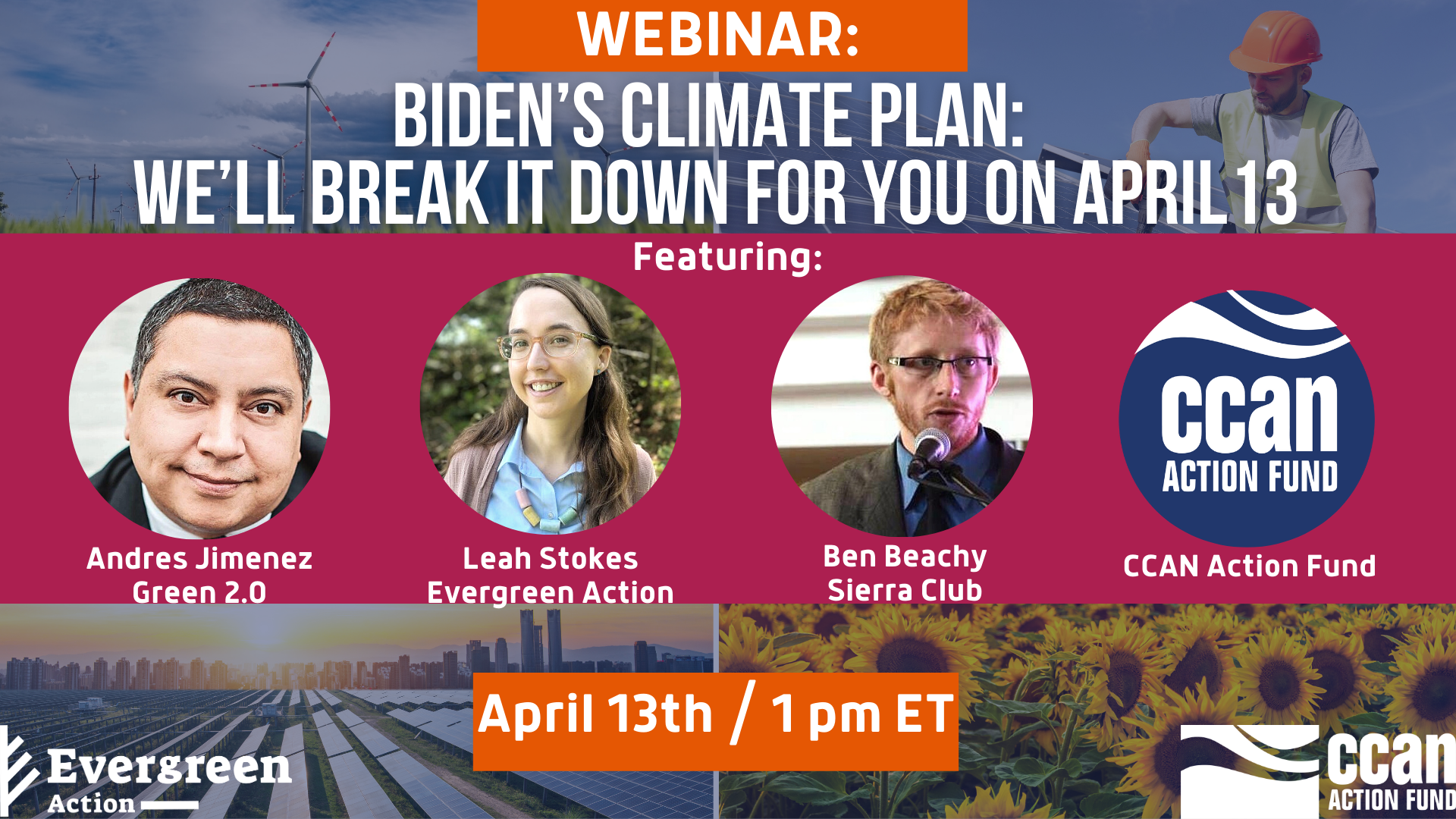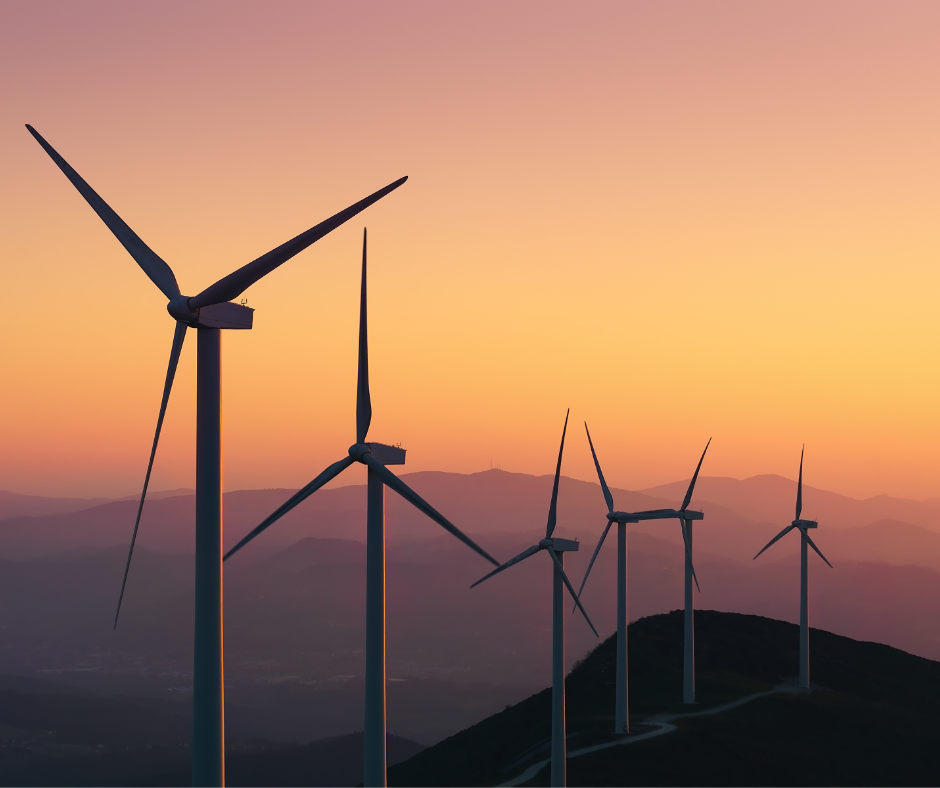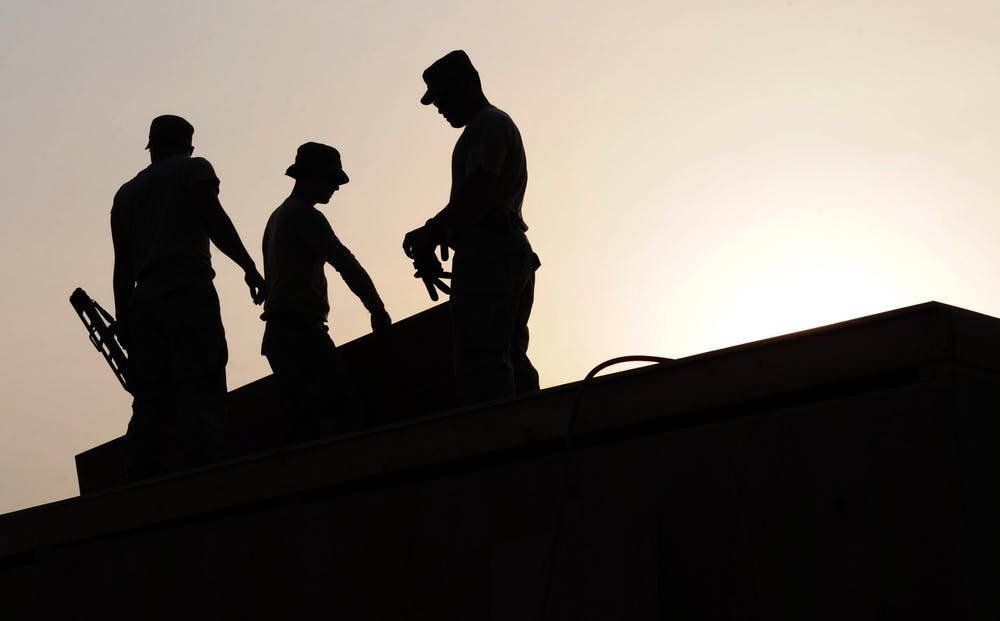
Labor Leader Rally for Clean Energy
Last week labor leaders joined climate advocates in what would normally be considered an unlikely cross-over episode. They rallied on the National Mall, in Washington, D.C. to show congress their support for an immediate passage of President Biden’s “American Jobs Plan” with a 100% Clean Energy Standard.
Read the full transcript below.
Charles Olsen 0:01
Hi, my name is Charlie Olson, and this is Upside Down the podcast from the Chesapeake Climate Action Network. Last week, climate advocates and labor leaders from around the DC area joined together on the National Mall to show their support for President Biden’s American jobs plan and the 100% clean electricity standard. The audio of this episode is taken from that rally. Enjoy.
Unknown Speaker 0:33
So here’s our message to Congress. Y’all got a lot of work to do over there. The bipartisan senate infrastructure bill last week does not come close to taking care of workers and the climate doesn’t come close. The roughly $600 billion in new spending is a start. But it leaves out nearly three quarters of President Biden’s vision under the American jobs plan released in March includes among other features $400 billion in investments for wind and solar construction of 500,000 electric vehicle charging stations and weatherization of 2 million low income homes. The plan also explicitly calls for passage of the protection of the right to organize act a bill that our labor colleagues have prized for decades. So I’ll let my friends in labor and from the hill explain more. But Congress, you must do more. Every feature dropped by the slim down insufficient senate infrastructure deal must be restored through additional bipartisan votes or more likely through budget reconciliation, all $2.3 trillion. All $2.3 trillion of Biden’s original jobs plan must become law, not $1 last for workers and clean energy. Now on to our first speaker. Now when Joe Biden first unveiled the American jobs plan in Pittsburgh and march It was a union worker who introduced him with the International Brotherhood of Electrical Workers. So we are thrilled to kick off this rally with Tom Clark, a 30 year member of the IBEW Local 26, here in the metro area region and a member of their executive board Tom.
Unknown Speaker 2:32
Good afternoon. As a proud member of the International Brotherhood of Electrical Workers, I anxious anxiously await the passage of the American jobs plan. This forward thinking piece of legislation puts America to work in 2021, but its effects will last well into the 22nd century. With the promise of installing 500 electrical vehicle chargers across the nation, President Biden has tat the IBEW to lead this clean energy project. Our president knows that the International Brotherhood of Electrical Workers are right now training young men and women for the green energy jobs at a future at no cost to the state. President Biden knows that union electricians collectively bargain for health care, annuities and defined pensions at no cost to the state. The White House knows that these very benefits will not only lead to a thriving middle class for my fellow electricians, but ensure future generations the same opportunities for success. The American jobs plan is not only multi generational, but addresses the gender pay gap as well. Because when union jobs, men and women get paid the same period. I’d like to thank President Biden and all congressional leaders for getting the American Job plan to this point. The future this bill is now in our hands. It’s now time for the American people to get to work. I asked all citizens to notify their representatives about the importance of passing the American Jobs Act. I ask all elected officials on Capitol Hill to get to work, compromise and pass all aspects of this vital jobs bill. This once in a lifetime bill that promotes clean energy and the American worker. Finally, I asked my fellow blue collar members to in organized labor, let’s strap on our tools and get to work. Thank you.
Unknown Speaker 4:51
Thank you, Tom Clark with IBEW Local 26. Now, you know after the disappointing and pared down Senate Structure agreement last week, there’s been a slogan that’s been circulating among climate advocates and congressional leaders. That phrase is no climate. No Deal. But I picked that phrase as incomplete. I think it should say, no unions, no deal as well. So I’m gonna speak here. And when I, when I yell something out, I want you all to respond with no deal. Okay, are you ready? No climate. No unions. No climate. No unions. No climate. No unions. Okay, y’all, they can’t hear you at the Capitol. All right. So we’re gonna do that one more time. You’re ready. No climate. No unions. No climate. No union. Fantastic. Thank you so much. Our next speaker is David Steven. He’s the political and legislative director of the metro Washington Council of the AFL CIO, David
Unknown Speaker 6:08
Haye, thank you. It is beautiful to be out here. Amongst all of our labor folks. On this beautiful day, y’all Give yourselves a hand for coming out here. To help me out, show me what democracy looks like. Show me what democracy looks like. Show me what democracy looks like. All right. All right. Now, you know, it was Dr. Kane that said that justice, or excuse me, peace is not merely the absence of tension, but the presence of justice. And I want to take this opportunity to thank congressman Bobby Scott, Congressman john Yarmuth for coming out here and standing with us as we fight for economic justice with our union brothers and sisters, y’all give them a hand. Now, President Biden knows unions are key to rebuilding an economy that works for the rebuilding. That starts with the passage of the American jobs plan. The Washington, DC metro Labor Council, is urging Congress to listen to the 10s and 1000s of union members right here in the District of Columbia, who are sick of a system that benefits billionaires at the cost of workers, it is time for Congress to pass the American jobs plan. This package will not only make critical investments into our nation’s infrastructure, but will help build a growing clean energy economy that is powered by millions of good paying jobs. Now, show me what democracy looks like. Thank you, God bless you.
Unknown Speaker 8:06
Thank you so much. And I want to ask congressman Bobby Scott, to step forward, it’s your turn. And congressman Scott, representing the third congressional district has been in Congress since 1993, is chair of the education and Labor Committee, a great friend of labor. And I want to begin, Congressman Scott by handing you a letter that was signed last week by 1700. Union households, not just from this region, not just from Virginia. But this letter calls for passage of the American jobs plan. And a clean energy revolution in this country was signed by 1700. Union households in all 51 States of America. And all their names are right here. So I want to hand this to you in recognition of your work. Please tell your colleagues that labor is with you. The climate movement is with you. And we are with you.
Unknown Speaker 9:14
Thank you. Thank you. Good afternoon. Good afternoon. I am Bobby Scott representing Virginia’s third district and that’s where the James River, Nansemond river and Elizabeth River all meet the Chesapeake Bay. And I want to thank you all for what you do to try to clean up the Chesapeake Bay. I’ve been working on it since I was in the Virginia General Assembly. In 1978. I was on a Maryland, Virginia, bipartisan legislative committee to see what we could do. And the first thing we decided to do is that Maryland and Virginia wasn’t enough. We didn’t get everybody involved. We’re wasting our time. And that’s why the Chesapeake Bay commission was formed many years ago. And so we’ve been working on this a long time and we’re making some progress. But we’re gonna thank you for all that you do. Now I also chair the committee on education and labor where I’m proud to advance the interests of working men and women. And I’m also the proud sponsor of the project, which passed the House of Representatives and do what you can to get it out of the Senate. Now, as we gather today we’re suffering through in the Pacific Northwest, we’re suffering through a dangerous heatwave precedent setting they used to have I’ve heard 90 degrees used to be noteworthy. They’ve had several days in a row where it’s over 110. I heard that an ice cream parlor had to close because the air conditioning couldn’t keep the ice cream cold enough. I mean, you think an ice cream parlor would be making money hand over fist similar weather like this not able to close because they couldn’t deal with the weather you got people in Detroit suffering from from flooding and coastal communities, including those hit by hurricanes last year preparing for another hurricane season. All of this is happening because of climate change. And you know that there’s another direction we ought to be taking and workers are leading the way. I’m proud to be here with my colleague, the Budget Chairman, John Yarmuth of Kentucky and hopefully, Joe Morelli, from New York will be here in a few minutes. And we’re working hard to get the American jobs plan to the American families plan passed in the United States Congress. We recognize this as a once in a lifetime capital investment, just like it was once in a lifetime when Dwight Eisenhower right after world war two created the interstate highway system, we have the opportunity to have a once in a lifetime infrastructure plan that not only does roads and bridges, and tunnels, and ports, and schools, the CDC said functioning ventilation systems are an essential element opening school safely. So we need to make sure in Virginia, half the schools the more than 50 years old, we need to make sure that we have school reconstruction, housing advice has already been mentioned, and broadband to bring communities into the 21st century, we need to do they have charging stations, people are gonna buy electric cars that they can charge them on the highway, people aren’t going to build charging stations and people aren’t buying electric cars. So we start off with the electric charging stations, people buy more cars. And next thing you know, every restaurant on it near the interstates is gonna have a charging station, because they’re going to attract people to those they’re gonna hook up with and then they’re gonna go right in the restaurant and buy a meal. That’s how you do it. But you have to have somebody with the vision to do the dude to do it first. We also need to do what it takes to put people to work. That’s like daycare, childcare, and early childhood education. So people can go to work and job training. So they’re so they have the skills to perform the work. All of that can be done in a climate friendly manner if we do it right. And that’s why rallies like this are so important. Why I’m so happy to be here. And I look forward to working with each and every one of you as we do what’s necessary to pass not only the American jobs plan, but also the American families plan and do it in a critical climate friendly way. Thank you very much.
Unknown Speaker 13:33
Really appreciate it. Thank you. Thank you, Congressman Scott, and thank you for all your leadership and making time for us in this heatwave. I next want to bring up another committee chair. We are very, very fortunate to have congressman John Yarmuth. Again, he is also from the third district but this one in Kentucky. He is in his eighth term in Congress. He is chair of the House Budget Committee. It is through congressman Yarmuth that any kind of reconciliation bill is going to have to travel and so we are fortunate to count him as a friend and Congressman Yarmuth, I too want to hand you this letter from 1700 labor households in all 51 states. So that includes the district, and we appreciate all that you do.
Unknown Speaker 14:27
Well, good afternoon, everybody. It’s great to be here. Thanks for standing up for the future of our civilization. It’s a good thing to be for. It’s great to be here with my colleague, Bobby Scott. Bobby’s my chairman. I’m his chairman. And incidentally, Joe Morel is on both the budget and the education labor committees as well. So we’ve got a monopoly here on the program. You know, about two years ago, I made a speech to the Louisville reference Louisville, Kentucky, by the way, I gave a speech to the local Rotary Club. And I said, The theme of the speech was that we’re in this incredibly interesting and probably unique time in our history. And that is that art history is catching up with us, and the future is getting here faster than we thought. And one of those things that illustrates that is climate change, we have our neglect for the environment, over generations and generations has brought us to this point. And it’s climate change. The climate threat is reaching us faster than anybody anticipated. Another area that that? Well, there are a lot of things. But I said, there are three things we need to be doing right now, as intensively as possible, if we’re going to have a future for our country. And number one is to deal with climate change. Number two was to deal with early childhood education, because unless we make sure that every young person in this country has the strongest possible Foundation, there isn’t going to be much of an economy or future for anybody then. And when I look at the American jobs plan, and the American families plan, and then you add in the American rescue plan, there is one unmistakable theme. And that is, we are trying to build a future for our country, for our children and grandchildren. And, that future involves dealing with climate change, so that there is in fact, a future. And right now, as Bobby mentioned, we’re seeing the manifestations of climate change every day, everywhere in our country, everywhere around the world. And it’s time to act. And one of the things that I’m so excited about with American jobs playing in American families’ plans is that finally, after decades and decades, we have leaders in Washington, who are asking the important questions in the right order. Now, what do I mean by that? For decades and decades, whenever we identified a problem we thought we needed to deal with, what was the first thing we asked, what can we afford to do? That’s not the right question. That’s not the right question. The right question is, number one, what do we need to do to serve the American people? Not the people we’ve been serving, who are the ones in the top 1%, and so forth. That’s, that’s the other party that serves them. But President Biden has finally started asking those questions in the right order. What do we need to do to prepare our young people for their labs? What do we need to do to save the country? environmentally? What do we need to do to build a 21st century economy and not a 19th century economy? What do we need to do to build an economy that actually looks forward to the future as opposed to looking back to the wagon trail days, again, that other party does that. And when we passed the American rescue plan, with its emphasis on children, the expanded child tax credit, which is the checks are going to start going out in about two weeks, to give every parent the means to lift their children up. Half the kids living in poverty are going to be lifted out of poverty with this, to give it to Gibbs, yes.
Unknown Speaker 18:28
To give state and local governments and school systems the resources they need to do things in an environmentally friendly way. And so to retrofit schools to build new schools and buildings that are environmentally friendly, that conserve energy, and so forth, and giving cities and towns and counties and states the money to do that as well. But there’s a reason that this major proposal, the American jobs plan, is not called the American infrastructure plan. The Republicans want to have a debate over what’s infrastructure. They don’t think childcare is infrastructure, they don’t think care for the elderly is infrastructure. They don’t think of the electric grid electrification for electric vehicles, any of that stuff’s infrastructure. Okay, who cares? That’s not what the name of the bill is. The name of the bill is the American jobs plan. Because the idea is to create millions of jobs while we realize this, this future oriented economy that we’re trying to build. I was thrilled to have my name on the American rescue plan. That was the day we passed that I said to myself, I asked myself, have I ever had a better week in my life? And I said, not even close. To have my name associated with something that changed lives so dramatically and made the kind of investment in our people that we did was something that I will always cherish. I had that opportunity. And now I have the opportunity to do it again and again. And believe me, I’m gonna do everything I can to make sure that the American jobs plan on the American families plan. And then whatever we do next year, when we can do reconciliation again, and do something that serves the American people, I’m going to be right there as well. So thank you so much for your passion, your commitment, and, and your interest in making sure that our future is a bright one, an environmentally friendly one, and one, which serves all of the people in this country, and not just the very few. We’ve seen how that works, we’ve seen the trickle down theory, not so good. We’re gonna build the next economy from the ground up, and make sure that the 99% who have been figuring out how to get by, won’t have to worry about that. They’ll work and they’ll get by, and the jobs will be there, and the future will be there for them. So thanks for all your work. Thanks for having me here today and get on with the rest of them, because we’re gonna need some help. It’s not going to be easy. But I think everybody in the Democratic Caucus, we’re not expecting to get any Republican votes. But everybody, the democrat credit caucus, we may have different ideas. But we all know that what we’re trying to do is the right thing, and we’re all agreed on the objective. So we’ll get there. Thanks for your support. We need it.
Unknown Speaker 21:29
Thank you, Chairman Yarmouth and our next speaker is also a member of Congress. Congressman Joe Murali, a Democrat from New York, he’s on both the House Budget Committee and the house education Labor Committee, proudly serves New York’s 25th congressional district. He’s got some really important business to deal with back on Capitol Hill involving something like armed services or something like that. So we wanted to bring him on up to the stage, I present to you Congressman Joe Murali.
Unknown Speaker 22:05
Good day.
Unknown Speaker 22:07
Good afternoon, I think it is a good afternoon. It is. Good afternoon, everyone. And thanks for being here. It’s wonderful to see you here at the nation’s capitol. I am honored to be talking alongside two of my favorite members of the House and to Chairman on whose committees I serve Bobby Scott, chairman of the education and Labor Committee. I’m very proud of our work there. And of course, John Yarmuth, who chairs the Budget Committee, a committee I also have the privilege of serving on, I do have to run back to an armed services committee meeting that we’re hosting right now. But I wanted to make sure I came down and said a few words about the importance of you being here. And the importance of the work that we have to do together to rebuild America. I have a pin on my dresser that I look at every single morning before I go to work. It’s the 55 year pin for my father, who was a member of local 13 plumbers and pipefitters in Rochester, New York. And I think about my dad every day. Because first of all, I don’t think I ever saw him in the morning. When I’d get up at 6: 37 to go to school. My father was already out to work. And he worked every single day. He was relentless. But he was incredibly proud of the work that he did. And what he would say to five of us that were lucky to call him dad. He talked about how the middle class was built by organized labor, and that the United States of America owes the fact that it has the middle class to organize labor now I’m pretty blessed in New York, have a buddy Mario Salento is the head of the AFL CIO in New York State, Gary labarbera, who heads our building trades in New York State. We have great progressive leaders in New York. But we have a lot of work to do around this country. If we’re going to build the middle class once again. And I think and I’m sure Bobby and John mentioned this, but I think the right to organize is as fundamental as any right guaranteed us and the US Constitution, the right to organize. And this is why this has been one the rights we have today have been one through the blood, sweat and tears of a lot of brothers and sisters who have come before us on whose shoulders we stand but it is our job our generations job now, to continue to expand those rights and to make sure that the right to organize, isn’t lost when they started calculating this data 22% of Americans were in Union households is down to 10%. That talks about the erosion of the labor movement, not because of the men or women in the labor movement but because the forces that have aligned against us and it’s time for us to take it back. That’s why we need to fight to pass the proact to raise the wage to enact the American jobs plan to create clean, sustainable, accountable tinyme for working families in the millions across this country. So I know I joined with my brothers and sisters and certainly with Bobby and John Yarmuth, Chair Two great committees, we have a great deal of work to do. And I also think we’re all blessed to have Joe Biden in the White House along with a comma Harris. They’re fighting for us every single day. And they’re bringing the fight to the Congress. And we have to join with them and join with all of you by the millions to come to Washington and capitals all around the 50 states in every village City Hall everywhere in America, to fight for these important things. So thanks so much for the opportunity to be here to be with you. But thanks so much for what you do every single day to fight the way for millions of Americans. God bless you, thank you.
Unknown Speaker 25:35
Thank you, Congressman Murali of New York, I really appreciate you making time. Okay, now we’re gonna take a quick break from the DC labor course. If you’ve never heard about them, you’re about to hear them. They are legendary in this town. They are all union workers from the area and they’re gonna sing a couple of songs for us and we’re so thrilled to have them. I present to you the DC labor course. And they’re gonna get set up and be ready in just a second.
Unknown Speaker 26:26
We are members of the DC labor chorus and we’re thrilled to be part of this event today. We have two songs for you and here we go through the change that we’re trying to change we are gone. Gone the last part, honor labor here we are gonna change we’re gonna change the last car race racism, no racism or sexism or homophobia. Jobs and justice jobs. We are gonna change jobs. Changing jobs is gonna change. Last time Yeah. Bronco, Bronco, Bronco. Very soon. We’re gonna change. Hey. Ready for the nice, strong. Pro. Show run. Where there can be no power right around the Sun got my forest on earth solidarity. Sa strong they have taken on toto oil to iron out our drain turn we learn
Unknown Speaker 30:43
straw in our hands is placed a power greater than their hard head told we can recover straw Espanyol. So your solidarity.
Unknown Speaker 32:09
All right, give it up one more time for the DC labor chorus coming out here on a hot day. Thank you so much. We really appreciate that lift. And I want to invite Tasia to the podium who’s going to speak to us for a mom, I thank you so much.
Unknown Speaker 32:28
What would you do beaky? Jesus gives you an indigent cause and I got you in on doing Juba magazine. Oh, damn. Hello, everyone. My name is Taylor Martin. Oh, I’m from the Fond du Lac reservation in northern Minnesota. I’m a well known water protector. Being a water protector, makes me anti pipeline, but we are not anti worker. You know as proletariat’s, you have the right to demand ethical pay, you have the right to demand fair wages. And you have the right to demand ethical work that isn’t harming indigenous people. But in the global south, which, if climate change, as it’s currently happening, the first people to feel those repercussions is our indigenous relatives to the global south. So I love the fact that we’re speaking about solidarity today. I love the fact that we’re standing up for your rights. I love the fact that you’re out here, not only demanding that those in Congress, you know, treat you fairly, but standing up for what you believe in as a core value of the water protector. So we’re really happy to see that as an indigenous person. I’m coming for everything that they told my grandmother’s that we could not have, and I hope to bring each and every single one of you with me Magwitch
Unknown Speaker 33:34
Thank you so much. tasia. Our next speaker is Josh Armstead. With Unite Here union Josh is the vice president of the DC chapter of Unite Here local 23, which represents over 7000 food service workers in DC, Maryland and Virginia.
Unknown Speaker 33:55
Alright, right, can everybody hear me? All right. Good afternoon, everybody. My name is Josh Armstead. As Jeff introduced, I’m a food service worker at Georgetown University. Most of the Vice President of Unite Here local 23 here in DC. When I started working at Georgetown, I immediately joined the committee for Unite Here local 23. And at Georgetown, we pressured Aramark for a fair living wage of $15 an hour and then using our power pressure DC to $15 an hour as a bare minimum for the work that we do. When we talk about climate justice. Right, we have to talk about fair treatment of workers along with the environment, one cannot go without the other. Winning $15 an hour or more now has changed my life. One of the first is my vision. I was unable to actually have good health care without actually joining the union and fighting for my rights on the job and for fair pay and for good health care. Now because of that fight. I’m More or less free to see you clearly, all workers need a fair living wage of at least $15 an hour. I’ve organized in many places across the country, including across the Potomac River and Virginia, which is a right to work state. And it’s shameful. It’s very shameful that there are millions of Americans right now who literally work 40 or more hours a week, and they don’t know how they’re going to pay the bills. They don’t know how they’re going to take care of their kids, as a single father of a three year old. I don’t know how I could personally survive. And I’m very thankful every day that I made the decision to join the union. But it shouldn’t be like that for anyone and the richest country on the face of the earth. It should not be that way. And speaking to, you know, COVID-19, right, like my union took a big hit. My union is the hospitality and restaurant workers union. If you’ve been in Estonian, you’ve probably seen most of our members. Or if you’ve gone to the airport, 98% of all of my brothers and sisters lost their jobs. But even then, we still were fighting. Joe Biden got elected because 1000s of members went to Florida, Pennsylvania and Nevada, Arizona, and made the crucial difference, knocking on doors. And then 1000 more members went to Georgia, and knocked on more doors to secure a Democratic Senate. Right. Like we need our government that we as workers put into office to actually care for us by passing and moving through the proact the American Jobs Act, and to make sure that all workers are uplifted, it does not make sense with the government that we as workers have put through, that we are still left behind, whether they be in airports, whether they be in restaurants, whether they be anywhere, we need to make sure that our government that we put in is passing this and so workers will keep on fighting until that happens. Thank you.
Unknown Speaker 37:07
Thank you so much, Josh. Thanks for everything you have been knocking on doors in Georgia and Pennsylvania and making it happen we really appreciate all our friends that unite here. Our next speakers are Anya vines and Ryan are leery of one fair wage. Man, I tell you, this organization gets stuff done. I told them earlier, I wish I had their well, whoever their media consultant is because every time I pick up a newspaper or turn on the radio, I hear about one fair wage causing good trouble. John Lewis always called it. So I want to invite Anya and Ryan up, they’re gonna let you know what they’re up to express some solidarity with the rest of us and actually give everyone a chance to take action right after this event. So y’all come on up.
Unknown Speaker 37:55
All right. So before I get started, if you guys support the ajp Make some noise. No, I don’t think I heard y’all right. If y’all support the American jobs plan, make some noise. Perfect. Thank you so much for inviting one fair wage here today. My name is Anya Vines, and I am speaking on behalf of one fair wage, and also on behalf of Generation Z. I’m 21 years old y’all and I am a part of the climate movement. That is very imperative. There is a stigma that is saying the next generation is not willing to pick up the pieces and help out with this fight. But I’m just here to tell you guys that that’s not the case. We’re out here. We are out here. We are fighting, we are standing in solidarity, we are a part of this fight, because we are the future at the end of the day. So again, thank you so much for having us here. And of course, speaking on the intersectionality between climate change and restaurant workers, you cannot support one without the other. You cannot support one without the other. You cannot bring attention to $15 plus tips on top nationwide, without paying attention to the climate change that is happening in the world. When it comes to climate change, it discourages people from leaving their homes from hurting neighborhood eateries. We support the American jobs plan. Why do we support the American jobs plan? Not only does it help unions, but it also addresses climate change with clean energy jobs that benefit everyone, including restaurant workers. So again, one fight is all of our fights. One fight is all of our fights, we have to understand internet intersectionality for both, so you cannot have one without the other. So one fairway stands in solidarity with each and every one of you. And I’m going to pass it off to Ryan so that he can inform you about our direct action because direct action that’s a part of the movement where revolution. So, we’re going to pass it. I’m gonna pass this off to Ryan. And at the end I’m gonna go over some chants with you guys and we’re gonna rock out together. Thank you.
Unknown Speaker 40:14
Thank you Anya. My name is Ryan, I’m another organizer with one fair wage. There’s two pieces of action that I want to mention today. The first is that we have officially submitted a proposal, a ballot initiative, to the DC council to once again vote to eliminate all sub minimum wages in DC and pay all tipped workers $15 with their tips on top. Make sure you sign that petition we got to get on the ballot. The other thing is that after this we are going to be taking a short walk down to the capital grille owned by the Darden restaurant group. Darden is the largest restaurant group in the country, they own all of the garden, they own the yard house, they own all of the Capitol grills and they are the biggest opponents to raising the tip minimum wage, a wage that has been set at 260 an hour since 1990. federally, so one fair wage is going to sue them. We’re suing them while we’re driving. We’re walking down later today after this rally, and we’re going to be serving them papers. We’d love for you to join us. We’d love for you know, we love talking to talk up here but it always helps to end it by walking a little bit of the walk. So please stick around afterwards. Look out for us. We’d love to have you come down for our, our serving. Alright, thank you guys.
Unknown Speaker 41:39
Thank you so much. By the way, I’m gonna be joining them. I’m walking down with one fair wage down to the crowd capital grille. And I hope if you all have an extra 1015 2030 minutes that you’ll join us, I think it’s really amazing that they’re giving us an opportunity again to walk the walk. So our last speaker and I saved him as cleanup. His cleanup hitter is Don Sleeman, and he’s going to be speaking on behalf of the Northern Virginia Council, the AFL CIO, and as a member of IBEW Local 26. Also, no one more than opened doors for this event and introduced me to a lot of new friends was always encouraging. And, you know, it feels like the goal here was not just to have a rally today and support the American jobs plan in support of union jobs and clean energy. The goal here was also to expand our networks to make our coalition bigger to create permanent relationships between the climate movement and the labor movement. And frankly, those bridges have not always been sturdy. And after today with the help of Don Sleeman, they are so much bigger and better and I give it to you, Don slamet.
Unknown Speaker 42:51
Good afternoon. How’s everyone? I want to compliment Mike on getting budget Chairman Yarmouth here, Bobby Scott here the head of the Labor Committee who wrote the best labor law I’ve legislation in the history of my lifetime. And Congress Murali is really a real pleasure to listen to him. You know, we’ve been waiting a long time to invest in people and infrastructure in this country. We’ve been waiting, how long, how many infrastructure weeks have we celebrated 1000s this bill, and it’s only one to two bills that we need. This bill will build back better and build a union like President Biden says he mentioned. And he mentioned building a union to change our climate when he spoke to Congress. This bill would expand broadband. This bill would revitalize Union Station and help the Brotherhood locomotive engineers and the union of transportation unions and the Teamsters. This bill will be the single largest investment in mass transit in the history of this country, which is not only good for our workers and good for folks that spend more time with their families so they can get home quicker, but it’s also good for our environment. This bill will clean our waterways. And you know, this bill doesn’t go far enough, right. We could spend trillions, trillions. 6 trillion is my you know 4.3 trillion is what the engineers society says just to get us upgraded where we should be. But this bill will be the largest investment ever. And it is a great start. And the focus of this bill, where we are going to build an apprenticeship. We’re going to build with prevailing wage, we’re going to build with safety. We’re going to build careers, not jobs, and all in creating a stable environment because we can build stable jobs and a stable environment we have to the alternative is insurrection after insurrection, as this country becomes more fascist, because the workers have no hope and don’t have any and can’t vote and can’t rely on each other to have rights and a voice at work. That is why it’s also so important to have the project as a vital part of this bill. To lift up all the voices, you know, I’m I’m happy I’m building Amazon, that’s gonna be a build 100% Union, their new headquarters and that is going to diversify our economy, though I have a lot of problems with Corporation and other things, but they are going to diversify this economy bring AI and robotics. But you know, what is AI artificial intelligence? How can quick machines learn? Well, how about real intelligence? How about giving workers a voice on the job, how about listening to the people to put things together who have experienced every single day in day out, that’s where real intelligence is, that’s where we’ll have productivity gains. And that only happens if you give the first amendment to people where they work and live where they spend their waking hours, build their relationships, even to get their last name. If you don’t have the right to have a voice on the job, you don’t have the First Amendment where you work, you don’t have anything, and only 6% of the private workers in this country, have a voice on the job, have a right to face your accuser have a right to prove their innocence and the right to stand up. If something is said about him without a union, they make up stuff about you, you’re fired, you’re out the door, and you don’t even have a chance to even say your piece. That is why it’s so important to get the project to be part of this climate action bill. And we have to do it. You know, in the last 75 years, every war we fought has been over fossil fuels and droughts. We can’t we can’t ignore reality. We have to fix our climate, save our climate. And there’s and this bill does it in a way where we’re also fixing our democracy. We’re fixing our trade unions, we’re fixing the balance of power between workers and capital, nothing’s going to change in this country to rebalance a property and workers and capital and give us a stable climate. And so this is the first of many times we’re going to get together. Because obviously, we’re not going to have this bill done by Fourth of July. And obviously, we’re not gonna have it. So it looks like Labor Day. So we have a lot of work to do. There’s going to be two bills, we have to have the American families plan as part of this American jobs plan. We have to invest in our children, we have to invest and take care of our elderly, we have to invest in paid, paid sick leave to Ireland’s in one nation, an entire world that doesn’t have paid sick leave. That’s us and, and marisha and some other places Borneo, Bernie, we have to make a difference. We’re so far behind. This is a start. And by getting these two chairs here, you know, the democrats have five or six marginal votes to play within a house and no margin in the Senate. But they’re going to have to do it because they saw the alternative. The alternative of doing nothing is having a bunch of fascist take our capital, so they got to get to work. And they got to give two bills to the president by Labor Day. And we’re all going to be there to make it happen. Thank you so much.
Unknown Speaker 47:45
Thank you, Don. slammin Nova afl-cio IBEW Local 26. Real last speaker is with a soccer team. And I’m going to let her tell you more.
Unknown Speaker 47:59
Hi, everyone. I’m Lindsay Behrens, with the Washington Spirit, a professional Women’s Soccer League here in the DMV and the National Women’s Soccer League, the most competitive Soccer League in the whole world. I’m here to invite you all to our salute to labor on July 10 at outfield and September 26 at segra Field in Leesburg, if you would like to join us and extend an invitation to all of your members, please let me grab me afterwards or my colleagues, Zoey, raise your hand. We’d love to have you thank you very much.
Unknown Speaker 48:38
So I want to thank all our sponsors one more time and then I want to send you away with some action items I want I think Metro Washington council the AFL CIO, the AFL CIO, Northern Virginia Labor Federation, International Brotherhood of Electrical Workers, local 26, the amalgamated transit union. Unfortunately, Ray Jackson couldn’t make it today. But they’re totally in solidarity with us. Again, the restaurant workers at one fair wage, and Josh will unite here and all the great work that they do. I also want to thank everyone who sees CCAN Action Fund, our board member Andres Jimenez. Natalie Piane, one of our board members for Northern Virginia, if you work for C can or C can Action Fund staff raise your hand, these people worked really, really hard to make this happen. Let’s give him a round of applause. Thank you so much. Thank you to the DC labor corps for singing. Thank you, Tasia and everyone else. So here are two things. The first one, one fair wage, folks, raise your hand. I’m going to be walking with them over to the Capitol grill. I hope all of you can come with us. Just one more thing we can do for everyone else. Let’s make the American jobs plan part of your life. We’re not talking about 10 years to get it passed. We’re not talking about five years. We’re not going to burden you with one year. We need your health for the next nine 90 days, this thing is either going to happen or not happen in the next 90 days, we’re going to resolve the destiny of our global climate. In the next 90 days, wrap your head around that. We’re going to decide once and forever: Are we going to have fair wages for a fair day’s work or not? We’re gonna resolve that in the next 90 days. We can do it together, good jobs, good wages, Union protections, clean air, clean water, solar power, wind power, electric vehicles, we can have all of that if we get the President’s back. We keep the pressure on Congress. We stay together, we stay informed. We stay united. So thanks again for coming. You guys. Really appreciate it. We’ll see you down the road.
Charles Olsen 50:45
Thanks for listening to Upside down. This podcast is produced by me, Charlie Olsen. with incredible support from the entire weekend staff. Check out the show notes for links to all the things discussed in this episode. If you want to know more about how you can get involved with C kin in the climate fight, check out our website at Chesapeake climate.org. If you want to get in touch with us, follow us on instagram and twitter at sea kin. And if you enjoy the work we do, why don’t you share it with your friends. Sharing the show is a super easy way to help spread the word about the work we’re doing in the fight for bold climate actions. Thanks again for listening. We’ll see you next time.

